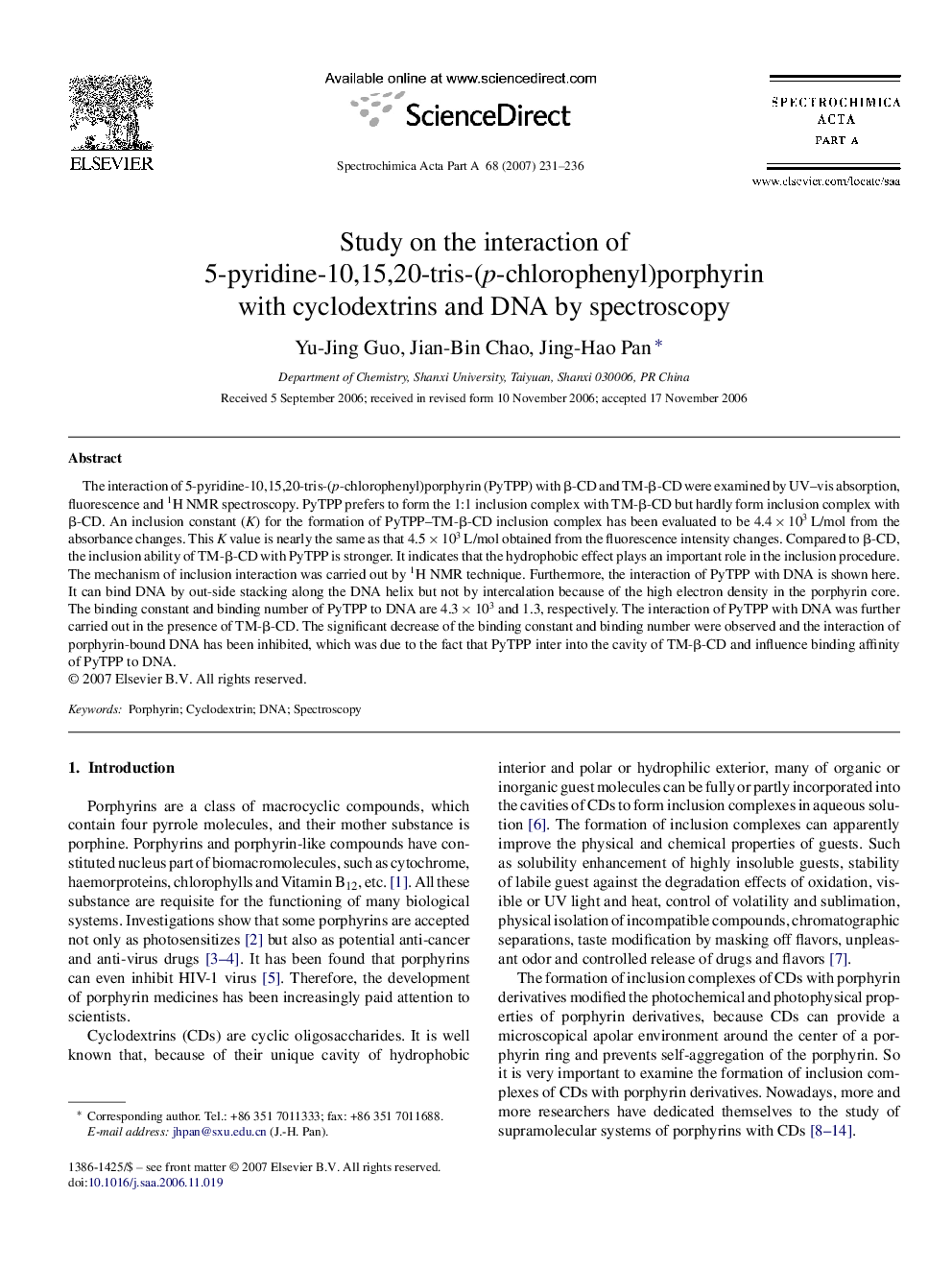| Article ID | Journal | Published Year | Pages | File Type |
|---|---|---|---|---|
| 1237905 | Spectrochimica Acta Part A: Molecular and Biomolecular Spectroscopy | 2007 | 6 Pages |
The interaction of 5-pyridine-10,15,20-tris-(p-chlorophenyl)porphyrin (PyTPP) with β-CD and TM-β-CD were examined by UV–vis absorption, fluorescence and 1H NMR spectroscopy. PyTPP prefers to form the 1:1 inclusion complex with TM-β-CD but hardly form inclusion complex with β-CD. An inclusion constant (K) for the formation of PyTPP–TM-β-CD inclusion complex has been evaluated to be 4.4 × 103 L/mol from the absorbance changes. This K value is nearly the same as that 4.5 × 103 L/mol obtained from the fluorescence intensity changes. Compared to β-CD, the inclusion ability of TM-β-CD with PyTPP is stronger. It indicates that the hydrophobic effect plays an important role in the inclusion procedure. The mechanism of inclusion interaction was carried out by 1H NMR technique. Furthermore, the interaction of PyTPP with DNA is shown here. It can bind DNA by out-side stacking along the DNA helix but not by intercalation because of the high electron density in the porphyrin core. The binding constant and binding number of PyTPP to DNA are 4.3 × 103 and 1.3, respectively. The interaction of PyTPP with DNA was further carried out in the presence of TM-β-CD. The significant decrease of the binding constant and binding number were observed and the interaction of porphyrin-bound DNA has been inhibited, which was due to the fact that PyTPP inter into the cavity of TM-β-CD and influence binding affinity of PyTPP to DNA.
